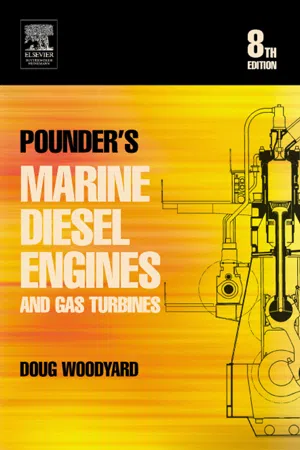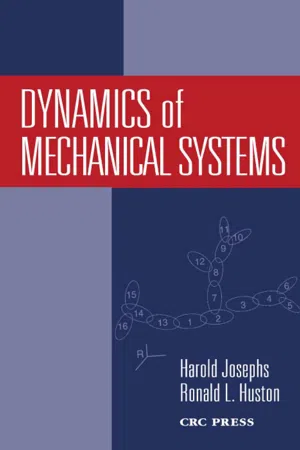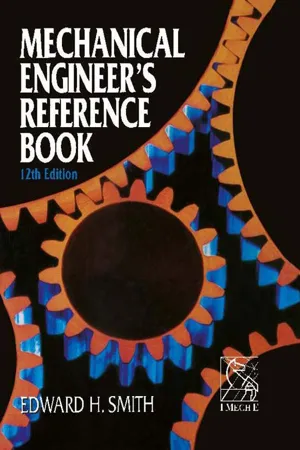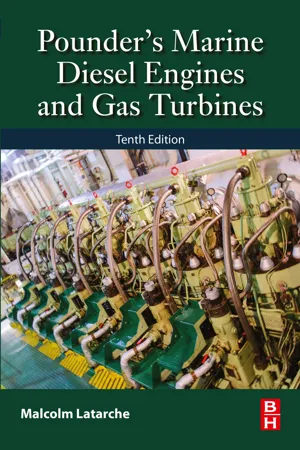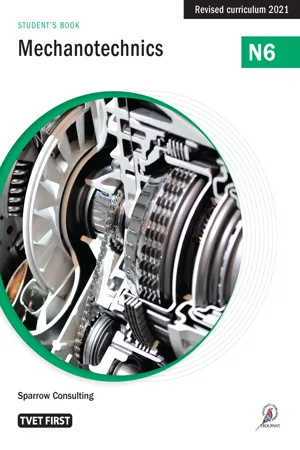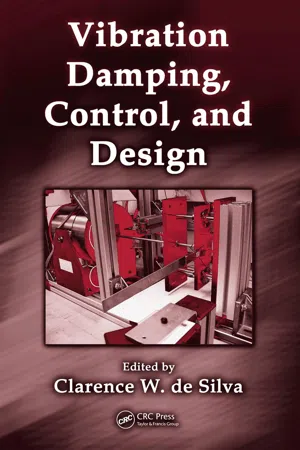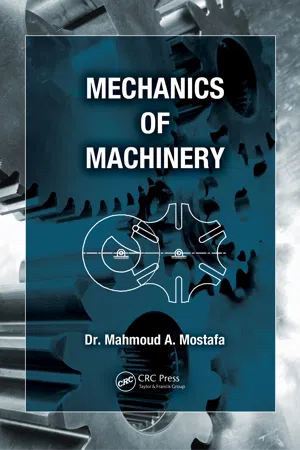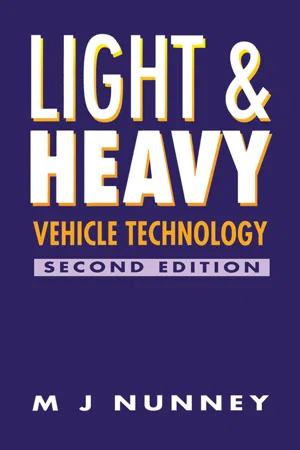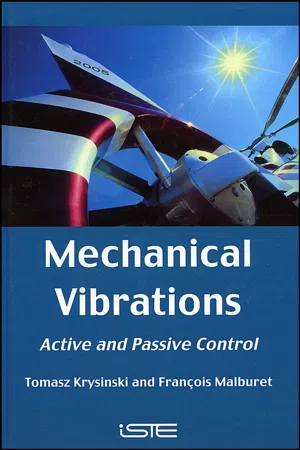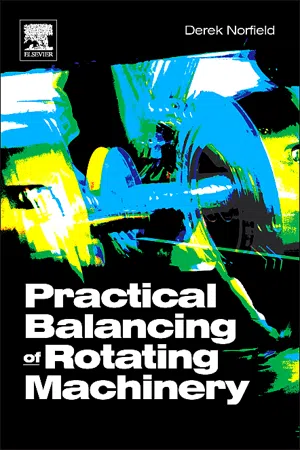Technology & Engineering
Balancing of Reciprocating Masses
Balancing of reciprocating masses refers to the process of minimizing the vibrations caused by the movement of pistons or other reciprocating components in machinery. This is achieved by counterbalancing the mass and inertia forces to reduce the overall vibration and improve the performance and longevity of the machinery. Balancing can be achieved through various methods such as using counterweights or dynamically balancing the components.
Written by Perlego with AI-assistance
Related key terms
1 of 5
10 Key excerpts on "Balancing of Reciprocating Masses"
- eBook - PDF
Pounder's Marine Diesel Engines
and Gas Turbines
- Doug Woodyard(Author)
- 2003(Publication Date)
- Butterworth-Heinemann(Publisher)
These forces, if not in themselves necessarily damaging, create objectionable vibration and noise in the engine foundations, and through them to the ship (or building) in which the engine is operating. Balancing is a way of controlling vibrations by arranging that the overall summation of the out-of-balance forces and couples cancels out, or is reduced to a more acceptable amount. The disturbing elements are in each case forces, each of which acts in its own plane, usually including the cylinder axis. The essence of balancing is that a force can be exactly replaced by a parallel force acting in a reference plane (chosen to suit the calculation) and a couple whose arm is the distance perpendicularly between the planes in which these two forces act (Figure 1.9). Inasmuch as balance is usually considered at and about convenient reference planes, all balancing involves a consideration of forces and of couples. In multi-cylinder engines couples are present because the cylinder(s) coupled to each crankthrow act(s) in a different plane. There are two groups of forces and couples. These relate to the revolving and to the reciprocating masses. (This section of the book is not concerned with balancing the power outputs of the cylinders. In fact, cylinder output balance, while it affects vibration levels, has no effect on the balance we are about to discuss.) Revolving masses are concentrated at a radius from the crankshaft, usually at the crankpin, but are presumed to include a proportion of the connecting rod shank mass adjacent to the crankpin. This is done to simplify the calculations. Designers can usually obtain rotating balance quite easily by choice of crank sequence and balance weights. Reciprocating masses are concentrated at the piston/crosshead, and similarly are usually assumed to include the rest of the connecting rod shank mass. - eBook - PDF
- Harold Josephs, Ronald Huston(Authors)
- 2002(Publication Date)
- CRC Press(Publisher)
513 15 Balancing 15.1 Introduction As with stability, balancing is a subject of great interest to engineers and to designers of mechanical systems — particularly in the design of rotating machinery. Unlike stability, however, balancing is a more applied subject, although balancing procedures can be rather detailed and technical. In what follows, we will discuss fundamental concepts of balancing. Readers interested in more detail or in more technical aspects should consult references at the end of the chapter or in an engineering library. In classical dynamical analyses of machines and mechanical systems, the machines or systems are generally modeled as ideal bodies with perfect geometry and uniform mass distribution — and, specifically, with no imbalance. In reality, of course, it is impossible to manufacture ideal bodies. Even with modern technologies, there will be variations in geometry and variations in mass distribution. Often, these variations are insignificant and unimportant. With high-speed and high-precision machines, however, even minor varia-tions in geometry and mass distribution can have significant and deleterious effects upon the function and life of a machine. This is especially the case with high-speed rotating bodies. A variation in geometry or in mass distribution away from the ideal is referred to as an imbalance . Because imbalances often lead to instability, particularly with rotating equipment, a technology of balancing has arisen which is intended to counter or eliminate the imbal-ances. Indeed, balancing technology has become an integral part of modern manufacturing processes for a wide variety of products ranging from rotors to propellers, automobile wheels, and bowling balls. In the following sections, we will briefly explore the funda-mentals of balancing and will restrict our attention to rotating bodies. Initially, we will study static balancing and then go on to dynamic balancing. - eBook - ePub
- Edward H. Smith(Author)
- 2013(Publication Date)
- Butterworth-Heinemann(Publisher)
4Figure 1.81.3.5 Balancing
In any rotational or reciprocating machine where accelerations are present, unbalanced forces can lead to high stresses and vibrations. The principle of balancing is such that by the addition of extra masses to the system the out-of-balance forces may be reduced or eliminated.1.3.6 Balancing of rotating masses
1.3.6.1 Single out-of-balance mass
One mass (m ) at a distance r from the centre of rotation and rotating at a constant angular velocity ω produces a force mω2 r. This can be balanced by a mass M placed diametrically opposite at a distance R , such that MR = mr1.3.6.2 Several out-of-balance masses in one transverse plane
If a number of masses (m1 , m2 , …) are at radii (r1 , r2 , …) and angles (θ1 θ2 , …) (see Figure 1.9 ) then the balancing mass M must be placed at a radius R such that MR is the vector sum of all the mr terms.Figure 1.91.3.6.3 Masses in different transverse planes
If the balancing mass in the case of a single out-of-balance mass were placed in a different plane then the centrifugal force would be balanced. This is known as static balancing . However, the moment of the balancing mass about the original plane would lead to what is known as dynamic unbalance .To overcome this, the vector sum of all the moments about the reference plane must also be zero. In general, this requires two masses placed in convenient planes (see Figure 1.10 ).Figure 1.101.3.6.4 Balancing of Reciprocating Masses in single-cylinder machines
The acceleration of a piston as shown in Figure 1.11 may be represented by the equation5Figure 1.11 * This equation forms an infinite series in which higher terms are small and they may be ignored for practical situations.where n = 1/r. If n - eBook - ePub
- Malcolm Latarche(Author)
- 2020(Publication Date)
- Butterworth-Heinemann(Publisher)
Fig. 2.9 ). Inasmuch as the balance is usually considered at and about convenient reference planes, all balancing involves consideration of forces and couples.In multi-cylinder engines, couples are present because the cylinder(s) coupled to each crank throw act(s) in a different plane.Fig. 2.9 Principle of balancing: (A) force (P ) to be balanced acting at A (B) equal and opposite forces of magnitude (P ) assumed to act at B, a distance (I ) arbitrarily chosen to suit calculation (C) system is equivalent to couple (P 3 I ) plus force (P ) now acting at B.There are two groups of forces and couples. These relate to the revolving and reciprocating masses. (This section of the book is not concerned with balancing the power outputs of the cylinders. In fact, cylinder output balance, while it affects vibration levels, has no effect on the balance that we are about to discuss.)Revolving masses are concentrated at a radius from the crankshaft, usually at the crankpin, but are presumed to include a proportion of the connecting rod shank mass adjacent to the crankpin. This is done to simplify the calculations. Designers can usually obtain rotating balance quite easily by the choice of crank sequence and balance weights.Reciprocating masses are concentrated at the piston/crosshead and similarly are usually assumed to include the rest of the connecting rod shank mass.Revolving masses turning at a uniform speed give rise to a single system of revolving forces and couples, each system comprising the related effects of each crank and of any balance weights in their correct phase relationship.Reciprocating masses are more complicated, because of the effect of the obliquity of the connecting rod. This factor, particularly as the connecting rod length is reduced in relation to crank radius, causes the motion of the piston to depart from the simple sinusoidal time-displacement pattern along the cylinder axis. It has instead to be represented by a primary (sinusoidal) component at a frequency corresponding to engine speed in revolutions per minute, a secondary component at 2 × engine speed, a tertiary component at 3 × engine speed, and so on. (It is seldom necessary to go beyond secondary.) - eBook - PDF
Mechanotechnics N6 Student's Book
TVET FIRST
- Sparrow Consulting(Author)
- 2021(Publication Date)
- Macmillan(Publisher)
Balancing is the process of restoring balance to a rotating element. Starter activity Discuss the following in class: 1. What causes a machine to vibrate excessively? 2. Why are small masses added to the outside or inside of vehicle’s wheel rims? 3. What is one of the main causes of the shortening of the life of a bearing? Figure 7.1: Rotor balancing on a dynamic balancing machine 175 Static and dynamic balancing TVET FIRST Unit 7.1: Balancing a single rotating mass 7.1.1 Introduction to balancing of rotating elements When a rotating element is in a state of unbalance, the centrifugal forces created by the unbalanced masses can adversely affect the bearings. They add unnecessary vibrations and shorten the life of machinery. bearing shaft light side heavy side flywheel centrifugal force heavy side centrifugal force light side axis of rotation of balanced assembly (shaft axis) axis of rotation of unbalanced assembly Figure 7.2: Out-of-balance flywheel In Figure 7.2, the centrifugal force of the heavy part of the assembly is larger than the centrifugal force of the light side of the flywheel. The result is that the entire assembly is pulled in the direction of the heavy side because the centre of gravity does not coincide with the axis of rotation. eccentricity (r) centre of rotation centre of gravity balance mass F C = m 1 ω 2 r 1 F C = mω 2 r centre of gravity (a) Unbalanced (b) Balanced due to addition of a mass Figure 7.3: Balancing the flywheel eccentricity: the distance of a mass to the centre of rotation (its radius) 176 Module 7 TVET FIRST Balancing is achieved by adding a mass at the light side or removing a mass at the heavy side. This will bring the centre of gravity in line with the axis of rotation (see Figure 7.3). Centripetal acceleration and centrifugal force Centripetal acceleration When a mass is rotating about a circle with a radius r and a constant velocity v, its direction changes all the time. - eBook - PDF
- Clarence W. de Silva(Author)
- 2007(Publication Date)
- CRC Press(Publisher)
Removing the “source of vibration” by proper balancing of the machine would be especially applicable in this situation. 7.5.1 Single-Cylinder Engine A practical example of a reciprocating machine with integral rotary motion is the internal combustion (IC) engine of an automobile. A single-cylinder engine is sketched in Figure 7.16. Observe the nomenclature of the components. The reciprocating motion of the piston is transmitted through the connecting rod and crank into a rotatory motion of the crankshaft. The crank, as sketched in Figure 7.16, has a counterbalance mass, the purpose of which is to balance the rotary force (centrifugal). Piston Crosshead Cylinder Connecting Rod Crank Pin Crank Crank Shaft Counterbalance Mass FIGURE 7.16 A single-cylinder reciprocating engine. Vibration Damping, Control, and Design 7 -26 We will ignore this in our analysis because the goal is to determine the unbalance forces and ways to balance them. Clearly, both the connecting rod and the crank have distributed mass and moment of inertia. To simplify the analysis, we approximate as follows: 1. Represent the crank mass by an equivalent lumped mass at the crank pin (equivalence may be based on either centrifugal force or kinetic energy). 2. Represent the mass of the connecting rod by two lumped masses, one at the crank pin and the other at the cross head (piston pin). The piston itself has a significant mass, which is also lumped at the crosshead. Hence, the equivalent system has a crank and a connecting rod, both of which are considered massless, with a lumped mass m c at the crank pin and another lumped mass m p at the piston pin (crosshead). Furthermore, under normal operation, the crankshaft rotates at a constant angular speed ( v ). Note that this steady speed is realized not by natural dynamics of the system, but rather by proper speed control (a topic which is beyond the scope of the present discussion). It is a simple matter to balance the lumped mass m c at the crank pin. - eBook - PDF
- Mahmoud A. Mostafa(Author)
- 2012(Publication Date)
- CRC Press(Publisher)
The rotating masses can be completely balanced by adding a balancing mass at the opposite side of the crank. Complete balance of the reciprocating and the floating masses can be achieved by a complicated setup. However, partial balance is obtained by increasing the balancing mass by a specific amount to compensate their effect, which is a good compromise. The effect of the added mass on the shaking force is shown in Figure 8.12. 8.3.2 A PPROXIMATE M ODEL OF A S INGLE -C YLINDER E NGINE In Section 8.3.1, the exact analysis for balancing a single-cylinder engine was presented by using MathCAD software. However, it is possible to use some 2.5 × 10 3 2.5 × 10 3 -5 × 10 3 5 × 10 3 -2.5 × 10 3 0 -2.5 × 10 3 FIGURE 8.12 Balancing of the engine mechanism. 2.5 × 10 3 2.5 × 10 3 -5 × 10 3 5 × 10 3 -2.5 × 10 3 0 -2.5 × 10 3 FIGURE 8.11 Polar diagrams for the engine mechanism. A B O (2) (3) G 3 (4) FIGURE 8.10 The engine mechanism. 394 Mechanics of Machinery approximations that are very effective in simplifying the analysis, especially for the case of multicylinder engines. The approximations are performed in two steps. 8.3.2.1 Equivalent Masses of Links A rigid link in a plane motion can be replaced by an equivalent system of two con-centrated masses, placed on a mass less link, which are kinetically equivalent. Consider link AB having a mass m , a moment of inertia I , and a center of gravity at G (Figure 8.13a). This link is kinetically equivalent to a massless link AB with mass m A placed at, say, point A and a mass m E placed at point E with a distance h E from the center of gravity G (Figure 8.13b). The two links are kinetically equivalent when the masses on the equivalent link satisfy the following conditions, 1. The sum of the two masses is equal to the mass of the original link. m m m A E + = (a) 2. The position of the center of gravity of the two links is the same. - eBook - PDF
- M.J. Nunney(Author)
- 2013(Publication Date)
- Newnes(Publisher)
The words 'partially alleviated' have been deliberately chosen, because a reciprocating mass can never be completely balanced by a rotating mass on the crank-shaft owing to the resultant forces acting along different paths (Figure 1.72). Any attempt to counterbalance the reciprocating forces is always made at the expense of introducing an unbalanced rotating force, the centrifu-gal effect of which becomes the greatest nuisance at right angles to the cylinder axis. A compromise solution is therefore usually sought by increasing the mass of the divided counterbalance weights such that they produce an opposing force equal to one-half the maximum reciprocating force to be cancelled. In other words, the counterbalance weights added to the crankshafts of single- and in-line twin-cylinder engines generally over-correct for static balance and under correct for recipro-cating balance. φ+ο- Balancing Unbalanced Balancing Unbalanced force rotating force rotating force force Figure 1.72 Partial balance of reciprocating and rotating parts Dynamic balancing of the rotating parts Even though a multicylinder engine crankshaft might be in a state of 'perfect' static balance, it by no means follows that it is also in a similar state of dynamic balance. The reason for this is that in static balancing we are dealing with forces, whereas in dynamic balanc-ing we are neutralizing couples — that is, opposing forces not acting in the same plane. An unbalanced couple can impose a rocking effect on the rotating crankshaft and therefore on the engine as a whole. A ready impression of the manner in which an un-balanced couple acts may be gained by considering the crankshaft layout of a horizontally opposed twin-cylinder engine. Here the crankthrows lie on opposite sides of the crankshaft rotational axis, so that the symmetrical distribution of their masses allows static balance to be achieved without the addition of counter-balance weights. - eBook - PDF
Mechanical Vibrations
Active and Passive Control
- Tomasz Krysinski, François Malburet(Authors)
- 2010(Publication Date)
- Wiley-ISTE(Publisher)
26 Mechanical Vibrations In certain cases, due to technical reasons, it is impossible to have as many balancing planes as bearings to balance. Through the least squares method, the method consists of minimizing the ensemble of residual vibrations on the set of bearings. The residual vibrations are defined by: 1 rj i0 ij sj R Z H Z [1.38] We can show that minimizing these vibrations makes it possible to establish the solution for balancing: -1 T sj ij ij ij i0 R H H H Z [1.39] 1.2.3. Example of application: the main rotor of a helicopter The rotor of a helicopter, consisting of a hub and its blades, represents a rotating system whose balance is extremely important for its good operation and for the comfort of the passengers. Differences in the blades may occur due to manufacturing errors or to various damages. Despite being a product with an industrial basis, the blades, made of composites, largely depend on the expertise and skill of employees to obtain the required quality. Numerous checks are performed at each manufacturing stage (weight, mechanical property, mold temperature, holographic check, etc.). Nevertheless, each blade is slightly different from the others. These imperfections can be of different types: mass variation, variation of the location of the center of inertia in the direction of the blade span and the chord, variation in the mass distribution in the direction of the blade span, variation in the airfoil shape (blade torsion, shape of the leading and trailing edges). All these imperfections can have consequences on dynamic behavior. Consequently, blade balancing is necessary. Balancing is done in several phases. One phase is away from the aircraft, consisting of obtaining static balancing as well as dynamic balancing. Another phase is the one in which the blades are assembled on the device; this phase takes place on the ground and then in flight. Unbalance and Gyroscopic Effects 27 1.2.3.1. Bench test phase on the ground 1.2.3.1.1. - eBook - PDF
- Derek Norfield(Author)
- 2011(Publication Date)
- Elsevier Science(Publisher)
2 Eliminate unwanted motion! Introduction When driving, or riding, in a car you want forward motion. That is the reason for being in the vehicle. You don’t want noise, vibra-tion, rattles, squeaks groans or screams. When operating machinery we usually want the rotational motion but not the side effects. Scream now. 48 Eliminate unwanted motion! How do we do that? It is all a matter of tolerances, tooling, unbalance correction methods and locations, balancing machines, and many other details that affect the performance of a product. Balancing may also be required due to the rotor design, or lack of design. Design errors, wide manufacturing tolerances, assembly procedures and rotor function, may cause large amounts of unbalance. Generally, the addition of a balancing operation allows for opening up manufacturing tolerances. Sometimes this is car-ried too far and the result is a higher amount of unbalance than what can be efficiently or even practically removed. The ‘value added’ by balancing comes from broadening of manufacturing tolerances and material specifications, elimina-tion of warranty failures, increased product performance, and the customer’s perception of a ‘quality’ product. Up to now, we have been looking at the results of not balancing to optimum levels. Now we turn to the process of balancing. Balancing is Science,Technology and Art Rotor balancing involves all three of the above parameters. Science – theory and calculations Technology – equipment and methods Art – the secrets to effective use of the science and technology Balancing is Science, Technology and Art 49 Don’t worry, its not that hard! That theory and calculation stuff can be scary! It is not com-plex but it is essential to a real comprehension of what we are doing in the balancing process. We will cover this in enough detail to give you a good understanding of the reasons why we balance to certain standards. Technology is the ‘nuts and bolts’ of what we are doing.
Index pages curate the most relevant extracts from our library of academic textbooks. They’ve been created using an in-house natural language model (NLM), each adding context and meaning to key research topics.
